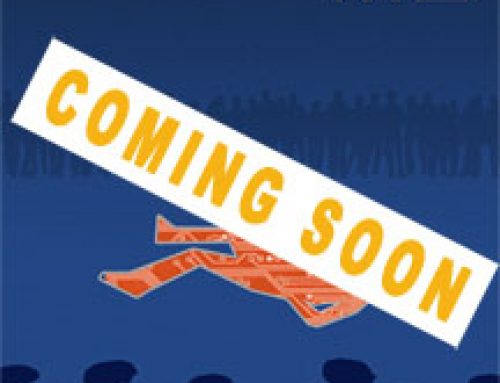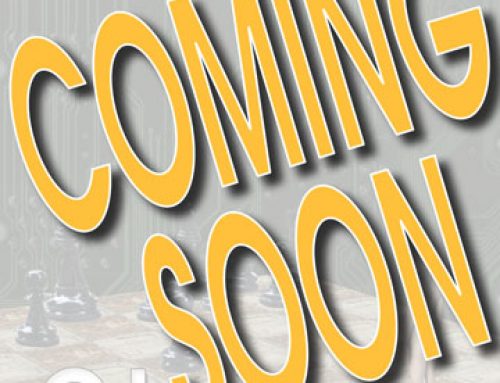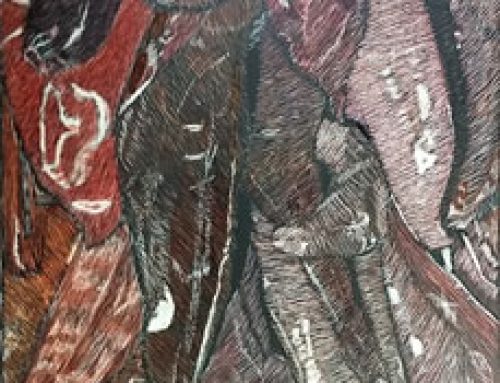Back to Greece
Let’s start at the very beginning. It’s a very good place to start.
In his “Poetics”, Aristotle proposed a structure for story telling. It’s not that he originated it — this structure has been around since stories started being written. He was just the first we know of to have codified it and appreciated the beauty of it. It’s a structure that is at the core of almost all stories. The great thing is, it’s simple:
The story starts at the BEGINNING, is expanded upon in the MIDDLE, and finally reaches an END.
That’s it. Beginning, middle, and end. That’s the whole of story structure. Simple. Here endeth the lesson.
Or is it simple? In reality, it’s a mish-mash of lots of things. It is a mixture of so many subtleties, that this simple structure becomes amazingly profound.
From a practical point of view, the structure tends to follow this formula: the beginning encompasses about the first 1/4 of a story, the middle a little more than 1/2 the story, and the end the rest (a little less than 1/4).
You’ll see it in just about any movie worth its salt. In a movie that’s between 90-120 minutes long, somewhere around the 20-25 minute point of the film, something happens that changes things (Luke decides to follow Ben Kenobi on some crazy adventure; Terrorists sieze the Nakatomi building; a house falls on the wicked witch of the East). Now lots of stuff happens for about an hour until something else happens (Maverick graduates with class and stays a fighter pilot heading off to a crisis; Kirk and party are rescued and can now fight Khan; Thomas Kent is discovered by most to be Viola).
In writers terms, beginning-middle-end are often referred to by act numbers: Act 1, Act 2, and Act 3 (not to be confused with Acts in television and plays) — as a result, the Aristotelian structure is commonly referred to as the “3-act structure”. Sometimes they are referred to as Setup-Conflict-Resolution. For the purpose of these hubs, I’m going to refer to them as Acts.

One thing that might help is a mental image. It is said that by the end of Act 1, we send our hero up a tree. Throughout Act 2, we throw rocks at our hero. In Act 3 our hero finds a way to get back down to the ground.
Beginning-middle-end
It seems so simple, but so much goes into this structure. There are questions as to when you start the beginning. How do you transition between the acts? And how about internal story arcs — they have beginnings-middles-ends, too. So do scenes, and sequences of scenes. Much as the mathematics of fractals have shown us how the same patterns in nature can be seen when you look ever-closer or ever-far-away, so too does the 3-act structure show up in something as small as an exchange of dialog, to the pacing of a multipart series of novels.
To learn how to write is to learn about the 3-act Aristotelian structure.
Beyond the Acts
OK, now that we understand the basic structure of story, we can start looking at how to develop within the structure. To do this, we must add the concept of the plot point. Plots points are generally defined as an event in the story that sends it spinning in another direction. The most obvious and blatant plot point is probably the tornado that whisks Dorothy from Kansas to Oz. Good plot points never nudge a story in a new direction, they hurl it.
Plot points occur just before Act breaks; i.e. they tend to be the precipitating action that ends an Act. So, by this reckoning, it would seem that there are just two plot points: one ending Act 1 (we’ll call that PP1), and one ending Act 2 (not surprisingly, we’ll call that PP2). Broadly speaking, yes. These are the major events that spin the action in a new direction. However (notice how there’s always a “however”), keen observers will note that in the longer story forms — long short stories, novellas, screenplays, novels, etc. — there is a third plot point somewhere around the middle of the story. Let’s call that the mid-point (or MP). It doesn’t spin the story to quite the degree of the major PPs, but is a good place to add a snarky element to the story just to make the hero’s life miserable, to start the audience questioning their own assumptions, or to re-enforce the story’s theme.
You are now either saying that all of this makes perfect sense… or huh?
Let me restate the basic structure. After the first few pages, where you’ve already started to grab the audience’s attention to a degree where they can’t look away, you start to introduce your primary characters. You show them in their day-to-day world. You can show that things are brewing, but mostly for the protagonist the world they know will be what they know. When you reach PP1, something big happens that makes your hero have to do something. Generally speaking, this is something that the hero isn’t happy to have to do.
Now, we have Act 2 (sometimes referred to by writers as, “That black hole in the middle,”) where we have to stomp on the hero. Obstacles, doubts, fears, victories that turn into defeats, deaths (deaths are always good), and other assorted maladies are heaped upon the hero. But, it is also here that the hero learns what they need to know to ultimately prevail. They cultivate allies. Their mettle is tested. But mostly, the hero doesn’t have much fun. Then comes PP2. This is a nexus: both the hero at their most bleak (think Luke witnessing Obi-wan being killed by Vader), and at the gateway to their own victory.
But, it’s only a gateway — we’re not there yet. The hero must now do their battle thingy — and they don’t necessarily have to obviously succeed in a happy way (it’s sort of the difference between drama and tragedy). In the end, assuming the hero survives, they’ll be changed. They are no longer the same person you introduced in Act 1. They may seem to be, but the whole of the story will have altered their world view.
If you think back to the books you’ve read and the movies you’ve watched, you’ll notice that the basic structural outline I’ve just given, pretty much holds up. It’s basic to how we tell compelling stories. You’ll also see that while it seems like an action-oriented method, it works for just about any story.
Let me also add that the longer forms (especially novels) take all of this one step further. Within this structure are contained story arcs. These are basically mini-stories within the story that follow their own beginning-middle-end needs — but which usually don’t attract a huge amount of attention to themselves. These often revolve around specific characters. Things they have to learn for the story, but which, from the character’s point of view, are their own separate stories. A key point here is that story arcs are rarely contiguous. They are more of a writer’s plotting/structure tool than something you want the audience to notice. It’s a subtle thing that I’ll explore in more depth in a future tip.
Since you are now armed with a grounding in the three act structure, you can go far. There is still much more to learn, but this is the foundation upon which everything else is built. With just this, and some practice, there is nothing you can’t write.
Basic Story Development
Now that we have a foundation for the structure of a story, we can build upon it. Developing the story is probably the second most crucial aspect of writing.
How do you develop a story? There are many tools that writers use: note cards, journals, scraps of paper, outlines, etc. (I personally like wikis). The physical method doesn’t matter. Use what works for you for any given story. Many authors stick to just one method. Many will change methods for every project. The tools don’t matter just so long as whatever you use will get you to where you need to go.
In terms of actual creation, you will generally start with a premise. The premise is the first unformed step that combines characters and context. You have a series of actions in mind, or a place, or even just a scene. Voila, context for your characters. Now, for some Hollywood scripts, this is enough to make a deal (“Die Hard” on a bus). This is what is known as “high-concept”. Generally speaking, you’re going to want something more.
Different writers use a variety of methods to take the next step. Some do copious research. Others do reams of character studies. Others start with the three-act structure and build the plot. Again, whatever works for the story. From my experience and the experience of many published authors I’ve discussed this with, it seems like focusing on developing your characters first is what tends to be preferred.
That said, I think the single most important step you can take at this early stage is to know how the story ends. If you can picture in your mind’s eye the last important scene, if you can feel what you want your characters to feel when their story is done, then all of the rest becomes clearer and easier. During the long process of writing, your story and characters will travel down a ton of roads. The one constant that you, the writer, needs to have to keep the journey from going off course, is knowing how everything ends. By knowing the destination, you are then free to send your characters seemingly far afield. But you aren’t, really. You know what it is they need to learn/experience/accomplish before they reach that final scene.
The only real danger in knowing your destination is that you’ll take too direct a course in getting there. It’s like taking a plane to go non-stop to Boston. You get there, but the trip is generally not very interesting. You need instead is a car, or a buggy, or your two feet to cause you to zig-zag to different events. That’s what plot points do (getting back to our three-act foundation).
OK. So we know where we’re going. Now what? Now you start working on the guts of your story. This is the grunt work. This is the research. This is the imagining. This is trying to find the problem areas. This is where you get to know your characters. If you don’t address these areas now, you’ll have to do it in rewrite — and at that point, it’s harder.
When you are working out your characters, I’d suggest getting into a dialog with a friend, another writer, or someone who will honestly try to help you create the characters. You want them to be real, and when you have to justify your decisions to someone else, you’ll find depth to your characters, and your story, that you might not have seen otherwise. Where did they go to school? Why did they flunk English in the first quarter of third grade? Why did they love their second dog more than the first? Who was their first kiss? What kind of kiss was it? And hundreds of other questions like that.
If you are in a dialog with another person asking you these questions, you’ll find that you start thinking to yourself that the character is actually a person, and not just an amalgam of stereotypes. It’s very easy for a lone author to either get enamored with their own cleverness, or to fall back on easy answers because otherwise it’s work. Do the work, it will pay off. It’s like the line in “A League of Their Own”: “It’s supposed to be hard! If it wasn’t hard, everyone would do it. The hard is what makes it great!”
After a while, you’ll have your characters in your head, and you’ll know all of the story points you need to hit to reach that moment in your head that you’ve been working towards all this time. You are ready to write.
Don’t.
What? I say don’t. Don’t start writing yet. Wait maybe another week or so. Go over your notes some more. Daydream and imagine a little more. Relax. Then… lock your notes away. You don’t need them for the writing stage. You have everything in your head that you need to know. Trust that. Don’t use the notes as an excuse to not write. You’re now going to go solo with the story.
What happens if you’re well into the story and you’ve gone hideously off track? Don’t worry about it. If you’ve done the work, your characters are still in your head, and you still know the story. Trust yourself. You can fix what you need to in rewrite. If it’s a dire writing emergency, enter the phrase “” and continue on where you feel you need to be at that point. If you’ve done your development work, this will almost never happen. Use it as a lesson to be more diligent in your pre-writing phase the next time.
Once you’ve finished your first draft, then you can unlock your notes again. Most of the time, you’ll find that you’ve pretty much stuck to what you planned to do. If you had trouble, you can see if it was a basic story problem or if it was a writing problem (i.e. you got a little too off track in your enthusiasm with the process). The important thing is to not worry about it. This is writing, not nuclear science. You were always going to have to do rewrites anyway. Now you have stuff to work with. It’s way harder to edit a blank page.
You will find, as almost all writers do the more they write, that the stories are typically much better when you know what you’re doing before you start. You have rich characters within a story framework that doesn’t seem too absurd. Don’t be shy about doing the prep work. It’s sometimes drudgery, but you’ll almost always be rewarded for it.





